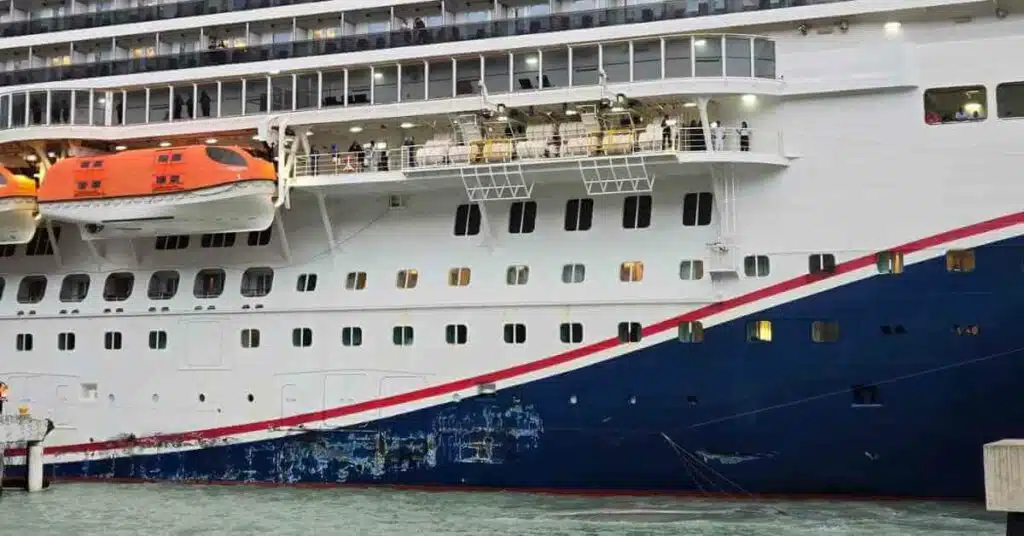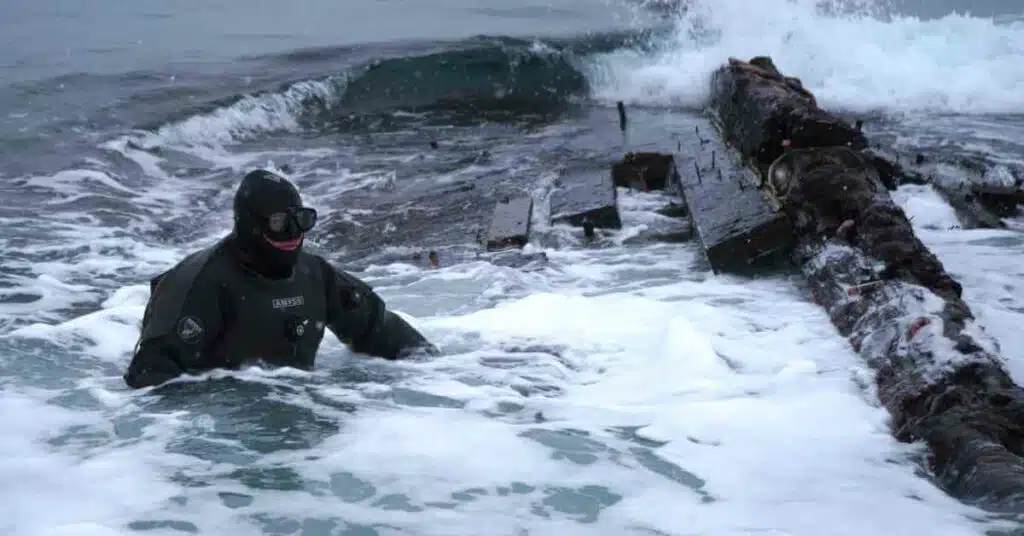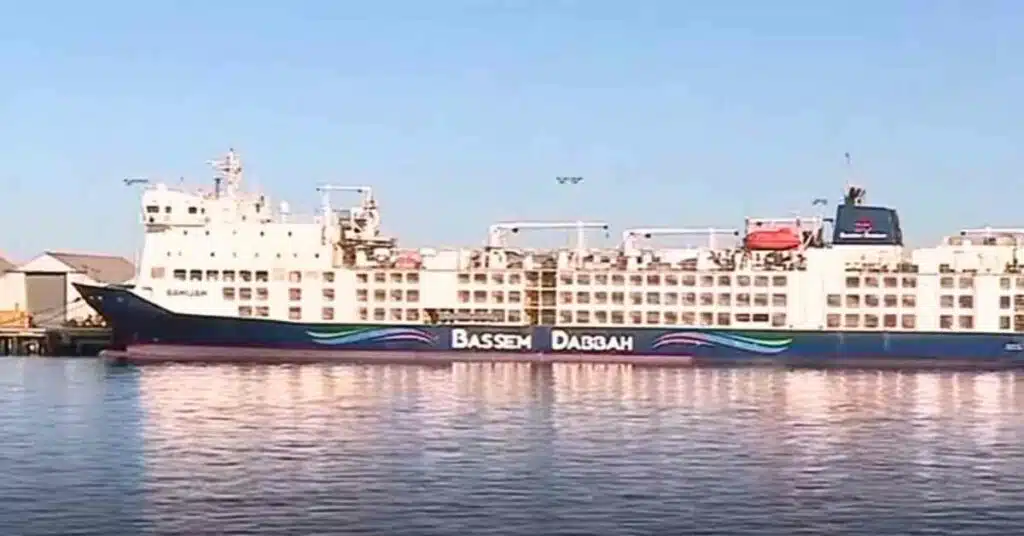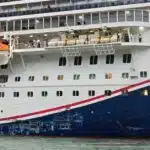Watch: How Container Shipping Works – The Process Of Transporting Cargo In Containers
You must have seen a steel box transporting goods at some point in time in your life…probably on rail, road or on a ship. This is a typical shipping container.
Shipping containers are standardized steel boxes we use to ship all kinds of things.
From Fruits to shoes, from computers to inflammable and hazardous materials for industrial purposes
With container shipping, anyone can transport their cargo from point A to Point B.
Now it may seem that transporting a container is a simple process, but in fact, it is a complex system full of checks and procedures
Let’s see the journey of a container from its point of origin to its destination.
But before beginning, please do subscribe to our youtube channel and press the bell icon to get connected.
In the container shipping industry, there are three main stakeholders involved –
Importer – Who wants to receive cargo from another country
Exported – Who want to sell and send the cargo to the importer
Shipping Company – Who delivers the cargo by receiving it from the exporter and sending it to the importer
Apart from them, there are other services involved which help to streamline the process (Port, trucking company, shipping agent, Freight forwarder etc.)
On Exporter’s Side
Let’s assume a renowned Denim brand from the US wants to outsource its jeans consignment from China. Once the consignment is ready, the exporter will first select a particular shipping company whose container will come to its factory for cargo loading.
If the cargo is large enough to accommodate in multiple containers, the exporter will use Full container Load i.e. full 20 feet or 40 feet containers are booked.
When the cargo to be shipped is less in quantity, then “Less than Container Load” or LCL is used.
With LCL you pay per cubic meter or per metric ton for space inside a consolidator’s container.
Now, a freight forwarder will assist both the importer and exporter for the transportation of cargo and will get the containers from the shipping company and bring it to the exporter for filling, stuffing, and sealing of cargo.
After loading the containers, the containers are sealed and an identical no. or a particular id is given to the exporter so that they can track their goods.
If the goods to be transported are dangerous in nature, such as gas or a toxic chemical, IMDG containers are used.
Similarly, if the cargo is perishable or temperature-sensitive, refrigerated containers are used to preserve the items for a long journey.
Now the Freight forwarder will arrange for the intermodal transport i.e. transporting the container from the exporter warehouse or factory to the designated shipping port for loading into the ships.
Then the representative of the exporter, a shipping agent, performs all the port paperwork, customs checks, and does the final inspection of the container and pays the port dues to shift the containers inside the port warehouse or storage facility.
The shipping agent will also collect the bill of lading from the shipping line after handing over the documents and mate’s receipt to the shipping line.
Now the chamber of commerce will issue the certificate of origin to the exporter.
In the port, the container weights are measured and the entries are made according to that. The container is stacked in the port in such a manner that they can be taken out easily as per the schedule of their assigned vessel. Now the container is ready to be loaded on the ship.
On Ships.
The ship Master is informed in advance about the cargo containers to be loaded on board in a particular port. The cargo loading plan is prepared by shipping companies’ cargo planners, who will take the data from the Chief officer regarding the current load condition of the ship including the cargo stowage, fuel & water quantities on the ship.
Once the ship arrives, the container is brought from the port storage facility, near to the ship by container port trucks which can carry a single 40ft container or two 20ft containers.
Now the container is loaded as per the cargo plan by the gigantic port cranes, which lifts it from the truck and transfers it to the ship.
The container can be stored on the ship’s cargo hold, where container guides are provided to draw and place the container inside the hold.
If the container is due for unloading in the next port, it will usually be kept on the deck. All deck containers are provided with extra lashing so that they do not become loose and fall overboard when the ship is out in the rough seas.
The container lashing is done by shore workers also known as stevedores.
In case of a container carrying dangerous cargo, additional precautions are taken to load and place the container at a safe area as per the IMDG Code guidelines.
The refrigerated containers are placed on deck as they need power plug points to run the incorporated refrigeration plant.
Once the ship loading is finished, it will now proceed for the next assigned port.
The loading plan is of extreme importance as the container will be loaded and secured onboard ship as per the plan.
If the loading plan is incorrect and the containers, whose destination is the next port, are stacked too deep or inside the cargo hold, the port crane operator will take additional time to take the container out, which means the ship stays more on port and pays for the additional port stay.
During the voyage, the ship officers are responsible to keep a check on the containers. Cargo lashing is checked from time to time to ensure all the containers are secured properly.
Cargo containers carrying dangerous goods are checked at regular intervals for leakages or damages while the ship is sailing.
On Importer’s side
Once the ship reaches the destined port, the container will be unloaded by the port cranes and it is transported to the port bay or warehouse using the port container trucks.
Now the representative of the importer will present the bill of lading and other documents to the port and shipping line.
If you remember, these are the same documents received in the port of origin by the Exporter. All the documents are then couriered to the importer for receiving the shipment
Once the custody of the shipment is acquired by the Importer’s representative or by the freight forwarder, the cargo will be transported using the intermodal transport to the importer’s warehouse where the container is unloaded.
The empty container is now returned to the shipping lines designated container yard, where it will wait for the next booking and onward journey.
The world is now connected by thousands of containers making it feasible for businesses and people to do trade across the globe.
Do you have info to share with us ? Suggest a correction

About Author
An ardent sailor and a techie, Anish Wankhede has voyaged on a number of ships as a marine engineer officer. He loves multitasking, networking, and troubleshooting. He is the one behind the unique creativity and aesthetics at Marine Insight.
Latest Videos Articles You Would Like:
- Cruise Ship Damaged Due To Severe Weather, Passengers Stuck Abroad
- Archaeologists Examine 19th-Century Shipwreck Found On Canadian Coast
- Australia Stops Livestock Ship From Sailing Around Africa To Israel Amidst Houthi Attacks
- Iran Warns U.S. Of Targeting Cargo Ships Following Latest Airstrikes On Houthis
- Watch: Ukrainian Forces Destroy Russian Missile Boat In Black Sea Operation
- Two Dead After Tragic Collision Between Water Taxi And Passenger Ferry In the Philippines
Subscribe To Our Newsletters
By subscribing, you agree to our Privacy Policy and may receive occasional deal communications; you can unsubscribe anytime.
















If a regular person (not a business) gets something shipped from another country, how do we get it out of the port? Do we have to pay someone to handle that or can an individual get it themselves??